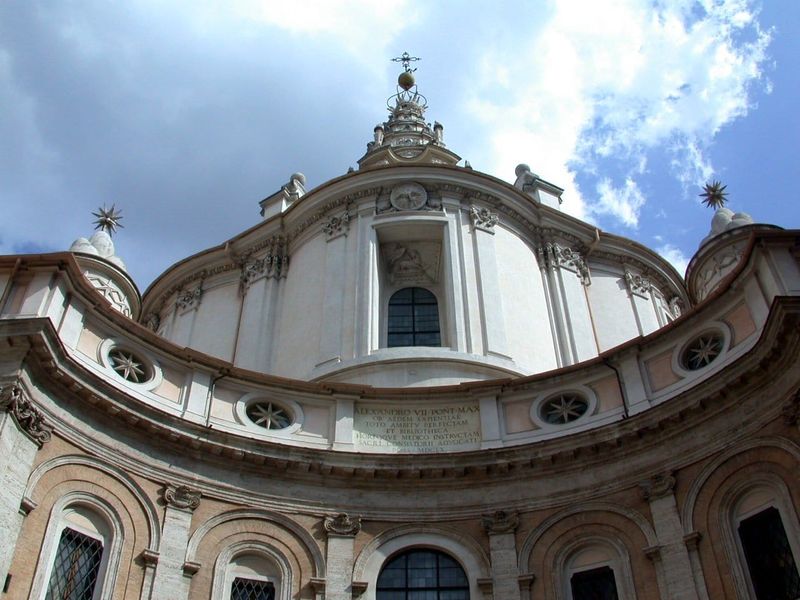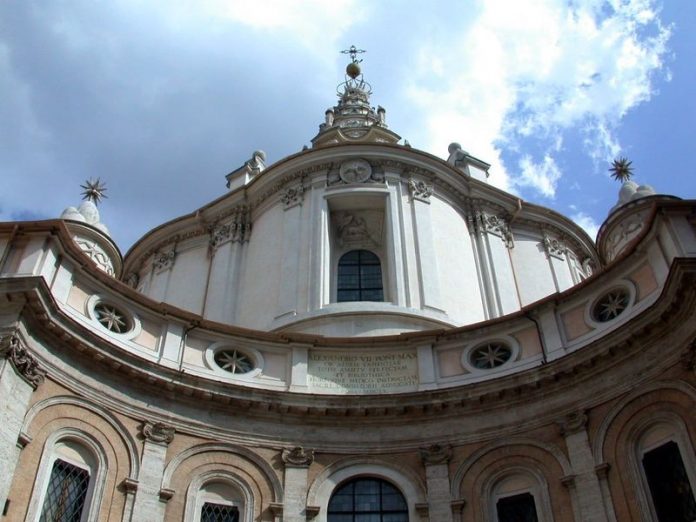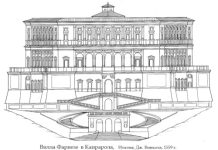The questions of the traditional language of architecture, the ways of adequate professional expression of ideas are still the most difficult for both the architect and the critic thinking about such topics to understand. Apparently, the assessment of architectural symmetry as a whole as a constructive idea of professional thinking is inseparable from the architect’s belonging to one or another tradition of architectural thought.
For example, Louis Kahn argues like this: “What is tradition? Everything made by man, his writings, paintings, music cannot be destroyed. The circumstances of creation are only a mold for casting. These considerations led me to understand that there is a tradition. Whatever happens in the circumstances of the course of a person’s life, he leaves as the most valuable gold dust, which is the essence of his nature. If you are familiar with this dust and believe in it, and not in circumstances, then you really touch the spirit of tradition. Maybe we can say that tradition is what gives you the ability to foresee what exactly of what you create will remain for centuries.”
Whatever the origins of symmetry in architecture, be it cosmology or anthropometry, the idea of an ideal social order or a poetic desire for harmony, upon closer examination it turns out that the cultural meaning of the traditional method of construction is much broader than any single aspect. Symmetry in art is not limited to its absolute meaning of identity, geometric equality.
By tradition, the term “symmetry” itself correlates in meaning with the idea of order. The meaning of the word “order” has been transformed by habit, by virtue of which every order is identified with its specific variant order, means to a certain extent the reduction of architectural solutions to an elementary geometric form, standardization of elements, the preponderance of rational due to spontaneous, impulsive creativity.
Nothing but general confusion, according to Rudolf Arnheim, does not mean understanding order as something that can be accepted or rejected or replaced by something else. Order, apparently, should be understood as an inherent property of the forms of existence – physical or spiritual.
Homogeneity, complete homogeneity represents the lowest level of orderliness. Architecture reaches it in the form of identical buildings.
Symmetry as a means of ordering an architectural composition creates either the simplest order, or offers a theme of complex order, full of fantasy and expression of variations. She is only a tool in the hands of a master.
The most general meaning of symmetry in architecture, as, indeed, in any search field, is the development of the theme of variations against the background of certain set invariants of constant conditions and the specifics of artistic creativity. Invariant schemes, in particular, design grids, grids, quantitative parameters are associated in the architect’s mind with the geometry of order, and variations, deviations from regulatory restrictions with the originality, individuality of the architectural drawing, compositional thinking of the architect as a whole.
The complication of invariant schemes makes it possible to understand one of the distinctive features of modern architecture – the tendency to dissect space, enrich the language of architecture. One of the possible ways is to emphasize the structural connections of building elements, their graphic design. The range of variation of combinations is not so much in the multiplication of the number of patterns, as, apparently, in the dynamics of the space of imagination and imagination of the architect. The history of architecture shows that the new arises not in the rejection of the scheme, the norm, but in overcoming them. At the same time, it is the method and measure of violation of canonical schemes that reveal the breadth of compositional thinking.
Professional attitude to symmetry is always individual. Some architects see order and normality as a kind of dictate, preferring to create on a whim, while others, on the contrary, find an impulse in overcoming the tight framework of prescriptions and restrictions. The professional attitude to symmetry is contradictory and rarely unambiguously formulated by the architect himself. Konstantin Melnikov, for example, was surprised when he was presented with a group of symmetry techniques developed by himself. In Melnikov’s work, symmetry accompanies the impulsive style of compositional thinking characteristic of the master, in many ways different from the creation of order in the classical traditions.
Let’s try to briefly review the studies of symmetry in artistic creativity to show the conventionality of its usual geometric interpretation, the presence of its regularities in the sphere of thought, where non-geometric forms of symmetry can be applied, for example, to ideas about imaginary spatial plots, etc.
Agreeing with the strictly mathematical nature of the laws of growth, Theodore Cook notes that all natural curved lines show some deviation and fluctuation in comparison with theoretical samples; these deviations and more or less noticeable fluctuations serve as characteristic features of life, the reason for the uniqueness of the curves of surfaces and volumes in which life forms manifest themselves. He transfers this theory to works of art, believing that beauty in them is predetermined by a contradictory pattern: first, the artist creates a strict plan of the picture, he is busy with “geometry”, like Plato’s god, then in the process of creativity he repeatedly deviates from the planned plan, and these fluctuations, telling us about the human hand, and give his works have those qualities that they would be deprived of with a strictly mechanical outline of the plan. According to John Ruskin, “All beautiful lines are created according to mathematical laws corrected by nature.”
V. Zubov showed with sufficient conviction how freely and at the same time cautiously Alberti and his contemporaries used the analogy between an architectural work and a human body. The definition of an architectural work as an organism is defined by analogy, and the principle of “imitation of nature” by Alberti cannot be understood as a reproduction in architecture of the laws of any natural prototype, in particular, a person.
Referring to V. Zubov’s research, we will show what amendments Alberti’s artistic intuition made to the theory. The architect says in his treatise that “a building is like a living being, creating which one should imitate nature.” What is his principle of “imitation of nature”? According to his theory, the first columns were made “in human likeness” and had a height of 6 or 10 lower diameters. But later, guided by “a sense of nature, innate to the soul, a sense by which… we perceive harmony,” the architects, “found such thickness and, conversely, subtlety inappropriate, rejecting both, and decided that what they were looking for was between extremes.” The architect remains faithful to nature, but ceases to be faithful to the original model, the prototype of the human figure. Regularity of construction, expediency characterize the artistic organism-the idea of “imitation of nature”. Imitation does not consist in copying nature: the artist creates like nature, imitates its structural patterns.



















